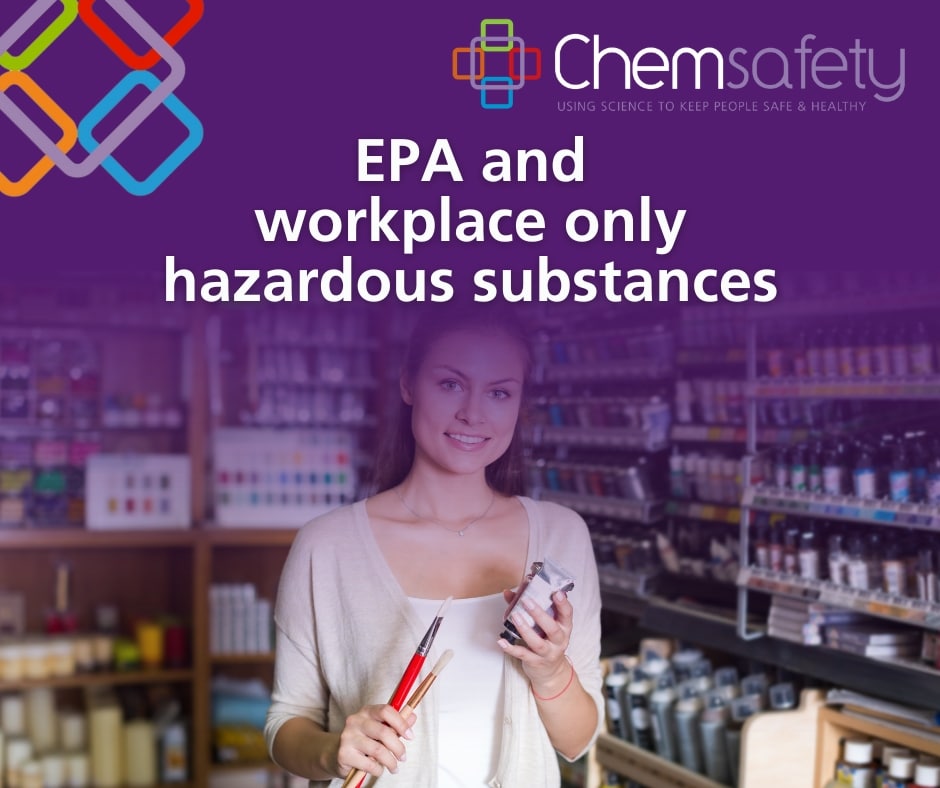
We have seen recent activity from the EPA about hazardous substances that are only permitted to be supplied to workplaces.
At workplaces you would be forgiven for thinking that the Health and Safety at Work (Hazardous Substances) Regulations – HSW(HS) are all that you need to consider, but for suppliers that is not the case.
Janet Connochie our Senior Hazardous Substances Consultant, Compliance Certifier and Director has written this piece that includes a rule that some substances are restricted to supply to workplaces only.
We have seen recent activity from the EPA about hazardous substances that are only permitted to be supplied to workplaces.
At workplaces you would be forgiven for thinking that the Health and Safety at Work (Hazardous Substances) Regulations – HSW(HS) are all that you need to consider, but for suppliers that is not the case.
The Hazardous Substances (Hazardous Property Controls) Notice includes a rule that some substances are restricted to supply to workplaces only. A supplier may only supply these substances to
- A workplace and only if they have written notification that a competent person will accept responsibility for the substance, or
- To an authorised person (someone who has an approval from the EPA to have the substance at a place that is not a workplace).
This is very similar to the tracking requirements – and the definition of competent person is the same as that used in the tracking regulations.
What’s the issue that has arisen?
EPA has begun to communicate these requirements to importers and suppliers and this is now being passed down the supply chain.
The list of classes of substances that are restricted to workplaces only is similar – but not the same as – the list of tracked substances. The classes are shown below – there are also lists of specific substances that are added and excluded.
Tracked Substances – |
Restricted to Workplaces |
| 3.1A | Flammable Liquids Category 1 |
| 4.1.2A, 4.1.2B | Self-reactive substances and mixtures Type A, B, C, D, E, F |
| 3.2A, 4.1.3A | Desensitised explosives Category 1,2,3,4 |
| 4.2A | Pyrophoric liquids & solids Category 1 |
| 4.3A | Substances and mixtures which, in contact with water, emit flammable gases Category 1, 2, 3 |
| 5.1.1A | Oxidising liquids & solids Category 1 |
| 5.2A, 5.2B | Organic peroxides Type A, B |
| 6.1A, 6.1B | Acute toxicity Category 1, 2, 3 (oral, dermal or inhalation) |
| Skin corrosion Category 1A | |
| Carcinogenicity Category 1 |
Table does not include Class 1 explosives.
The classes causing the most concern from a supplier / customer perspective are below.
- 1C – Acute toxicity Category 3
- 7A – Carcinogenicity Category 1
The reason being is that these are not tracked, but found in a wide range of products. Also of note is that the lists of specifically included and excluded products are not the same – for example class 6.1B hydrochloric acid is in the not tracked list, but not in the not restricted to workplaces list.
What are suppliers asking for?
Suppliers should be asking for written confirmation that there is a competent person – i.e. the name and work address of the competent person(s). They should not be asking for your training records, nor is there such a thing as a “competent handler certificate”. Certified handlers are only applicable to explosives (some exceptions apply), fumigants and Class 6.1A and 6.1B toxic substances.
What do I need to do?
All persons handling hazardous substances in the workplace require training in accordance with regulation 4.5, so you should already have a training process and records in place.
What has changed?
Nothing really, both the Hazardous Property Controls notice and the training requirements under Regulation 4.5 have been in place for over 5 years. EPA is bringing the requirements to the attention of suppliers, and have an information page for regarding this.
Click below to see how Chemsafety can help you with your hazardous substance requirements.
